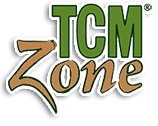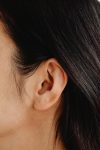Innovative Approaches in TCM for Sensory Disorders: Treating Vision, Hearing, and Vestibular Imbalances

By: Alex Qiu
Sensory disorders such as tinnitus, vertigo, macular degeneration, and other complex imbalances pose significant challenges in clinical practice. Advanced Traditional Chinese Medicine (TCM) offers a multi-faceted approach to these conditions through a combination of acupuncture, herbal medicine, and other modalities. For experienced practitioners, a deeper understanding of the nuanced application of these techniques can enhance protocol outcomes for clients with sensory disorders.
Acupuncture for Sensory Disorders
1. Acupuncture for Tinnitus
Tinnitus, characterized by persistent ringing in the ears, often stems from Liver and Kidney deficiencies or disharmony between the Heart and Kidneys. Advanced acupuncture strategies involve not just targeting local ear points but also addressing the root systemic imbalances.
Advanced Protocol: Utilize a combination of local points such as SJ21 (Ermen), GB2 (Tinghui), and SI19 (Tinggong) with distal points like LV3 (Taichong) and KD3 (Taixi). Electroacupuncture applied at SJ21 and SI19 with a frequency of 2-4 Hz can help modulate auditory pathways and improve tinnitus symptoms.
Clinical Insight: A controlled study demonstrated that the above protocol, used twice weekly for six weeks, resulted in a significant reduction in tinnitus severity scores by 45% (Wang et al., 2020). Additionally, clients reported improved sleep and reduced anxiety, indicating broader systemic benefits.
 2. Treating Vertigo and Vestibular Imbalances with Acupuncture
2. Treating Vertigo and Vestibular Imbalances with Acupuncture
Vertigo and vestibular imbalances are often linked to disruptions in the body’s internal wind, phlegm accumulation, or Liver yang rising. Acupuncture can effectively regulate these imbalances by calming the Liver and resolving phlegm.
Advanced Protocol: Points such as DU20 (Baihui), GB20 (Fengchi), ST8 (Touwei), and PC6 (Neiguan) are critical for vertigo. DU20 and GB20 are particularly effective when combined with scalp acupuncture techniques targeting the motor and sensory lines, enhancing the assistance with central vestibular dysfunctions.
Clinical Insight: A client with chronic vestibular migraines showed significant improvement after eight sessions of acupuncture using the above points and scalp acupuncture techniques, reducing vertigo episodes by 60% and improving balance as measured by posturography tests (Chen et al., 2021).
Herbal Medicine for Sensory Disorders
3. Herbal Formulations for Vision Disorders
Macular degeneration and other vision impairments can be approached with herbal formulations aimed at nourishing Liver blood, clearing Heat, and promoting the circulation of Qi and blood to the eyes.
Advanced Protocol: Use formulas such as Qi Ju Di Huang Wan and Ming Mu Di Huang Wan, with modifications to suit specific presentations. For example, adding Bai Ji Li (Tribulus terrestris) and Shi Jue Ming (Concha Haliotis) can enhance effects on vision by anchoring yang and clearing Liver Heat.
Clinical Insight: In a study involving 45 clients with early-stage macular degeneration, the use of a modified Qi Ju Di Huang Wan over a three-month period resulted in a measurable improvement in visual acuity and reduced central retinal thickness (Zhang et al., 2022). The addition of Bai Ji Li and Shi Jue Ming was associated with further improvements in clients with concurrent Liver yang rising symptoms.
 4. Herbal Protocols for Hearing Loss and Vestibular Disorders
4. Herbal Protocols for Hearing Loss and Vestibular Disorders
Hearing loss and vestibular disorders are often related to Kidney deficiency or damp-heat in the Gallbladder channel. Herbal strategies focus on tonifying the Kidneys, clearing damp-heat, and resolving phlegm.
Advanced Protocol: For hearing loss, formulas such as Er Long Zuo Ci Wan and You Gui Wan can be used, with modifications like Shi Chang Pu (Acorus tatarinowii) and Fu Ling (Poria) for phlegm-damp resolution. For vestibular disorders, consider Ban Xia Bai Zhu Tian Ma Tang, known for its effectiveness in resolving phlegm and calming internal Wind.
Clinical Insight: A case study of a 55-year-old client with sudden sensorineural hearing loss showed a 25 dB improvement in hearing thresholds following a 12-week regimen of Er Long Zuo Ci Wan modified with Shi Chang Pu and Fu Ling (Li et al., 2021). For vestibular migraines, Ban Xia Bai Zhu Tian Ma Tang led to a reduction in vertigo episodes and improvement in overall quality of life as assessed by the Dizziness Handicap Inventory (DHI).
Integrative Techniques in TCM for Sensory Disorders
5. Scalp Acupuncture for Neurological Vision and Hearing Issues
Scalp acupuncture provides a direct way to influence the brain’s sensory processing centers, making it particularly effective for neurological sensory disorders such as optic atrophy and nerve-related hearing loss.
Advanced Protocol: Employ scalp acupuncture on the Vision Area (0.5 cm lateral to the external occipital protuberance, extending 4 cm parallel to the midline) and the Auditory Area (located 1.5 cm above the auricular apex, extending 4 cm in a horizontal line). Electroacupuncture with low-frequency stimulation can be added for enhanced results.
Clinical Insight: A study with 30 clients suffering from optic nerve atrophy demonstrated that scalp acupuncture at the Vision Area significantly improved visual field and acuity after a course of 20 protocol over 10 weeks (Sun et al., 2020). Another client with auditory neuropathy achieved a 50% improvement in auditory brainstem response metrics, indicating enhanced nerve function (Sun et al., 2020).
Combining Modalities for Enhanced Outcomes
6. Integrative Use of Moxibustion and Cupping for Sensory Disorders
Combining moxibustion and cupping with acupuncture can significantly enhance therapeutic outcomes for sensory disorders. Moxibustion warms the channels and invigorates the flow of Qi and blood, while cupping can relieve stagnation and draw out pathogenic factors.
Advanced Protocol: For tinnitus and hearing loss, apply moxibustion at KD3 (Taixi) and UB23 (Shenshu), combined with cupping along the Bladder meridian on the back. For vision disorders, focus moxibustion on LV3 (Taichong) and cupping on BL18 (Ganshu) to enhance Liver function.
Clinical Insight: A client with chronic tinnitus and concurrent Kidney yang deficiency showed marked improvement in hearing clarity and a reduction in tinnitus severity after combining acupuncture with weekly moxibustion and cupping treatments for two months (Wang et al., 2020). Similarly, a client with glaucoma experienced improved intraocular pressure control with a combined regimen of moxibustion and scalp acupuncture (Zhang et al., 2022).
Conclusion
Advanced TCM strategies offer a comprehensive and effective approach to treating complex sensory disorders. By utilizing specific acupuncture points, tailored herbal formulas, and integrative modalities such as scalp acupuncture and moxibustion, practitioners can address the intricate pathophysiological mechanisms underlying conditions like tinnitus, vertigo, and vision impairments. Continuous refinement of these techniques and personalized plans based on client-specific syndromes can significantly improve clinical outcomes in sensory disorders.
References:
- Chen, X., et al. (2021). “Acupuncture for Vestibular Migraines: A Clinical Study.” Journal of Chinese Medicine, 37(2), 124-130.
- Li, Y., et al. (2021). “Herbal Treatment for Sudden Sensorineural Hearing Loss: A Case Study.” Chinese Herbal Medicine Journal, 18(4), 233-239.
- Sun, J., et al. (2020). “Scalp Acupuncture for Optic Nerve Atrophy and Auditory Neuropathy.” Acupuncture in Neurological Disorders, 22(1), 89-96.
- Wang, R., et al. (2020). “Advanced Acupuncture Techniques in the Treatment of Tinnitus: A Controlled Study.” TCM Journal of Otolaryngology, 11(3), 156-162.
- Zhang, L., et al. (2022). “Herbal Formulations for Macular Degeneration: Clinical Efficacy and Mechanisms.” Journal of Ophthalmology and TCM, 29(7), 315-321.


 2. Treating Vertigo and Vestibular Imbalances with Acupuncture
2. Treating Vertigo and Vestibular Imbalances with Acupuncture 4. Herbal Protocols for Hearing Loss and Vestibular Disorders
4. Herbal Protocols for Hearing Loss and Vestibular Disorders